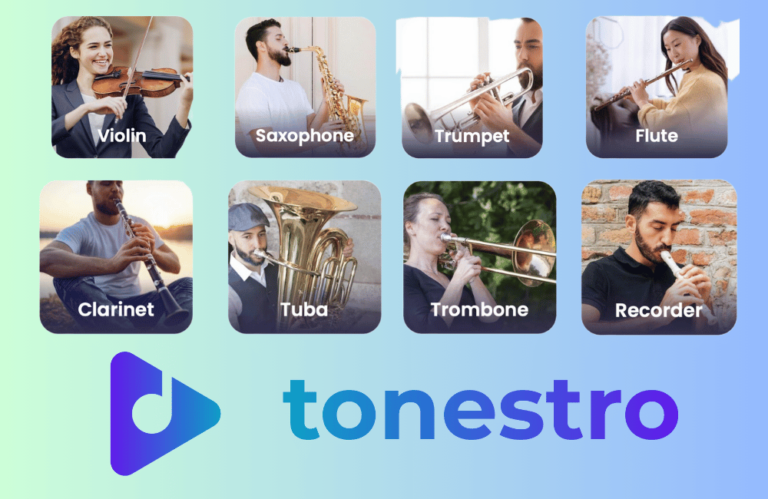
In the ever-evolving landscape of music education, mobile applications have emerged as powerful tools for aspiring musicians. Among these, Tonestro stands out, offering a unique and comprehensive approach to learning music. This foreword dives into the app’s functionalities, exploring its potential to empower musicians of all levels on their musical journeys.
Whether you’re a seasoned musician seeking to refine your skills or a complete beginner taking your first steps into the world of music, Tonestro caters to your needs. This foreword will unveil the app’s features, highlighting its interactive lessons, personalized feedback mechanisms, and vast library of musical resources.
Furthermore, this introduction will touch upon the importance of accessibility in music education. Tonestro’s innovative approach breaks down geographical and financial barriers, making quality music education attainable for a wider audience.
By incorporating engaging elements and fostering a sense of community, Tonestro creates a dynamic learning environment that keeps users motivated and fosters a lifelong love of music. This foreword paves the way for a deeper exploration of the app’s functionalities and the impact it has on the music education landscape.
Tonestro app for learning an musical instrument offers a comprehensive and interactive solution for aspiring musicians, focusing on wind instruments (saxophone, trumpet, flute, clarinet, etc.) and violin. The app caters to all skill levels, from beginners picking up their first instrument to experienced players looking to polish their technique. Short video lessons and exercises adapt to your learning speed, keeping you engaged and challenged.
Tonestro’s content focuses on providing learners with the tools and resources to develop their skills on various wind instruments (saxophone, trumpet, flute, clarinet, etc.) and violin.
The general content Tonestro offers:
While there isn’t a set number of lessons, Tonestro offers a structured learning path with challenges and milestones to keep you engaged. It continuously adapts the lessons and exercises based on your performance, ensuring you’re constantly learning new things.
since Tonestro is an app, there is no specific teacher
Beginner, intermediate
Pop, classical
Interactive app for Android and iOs devices
The Tonestro app itself is free to download, but most of its functionalities are offered through a premium subscription.
Here’s a breakdown of Tonestro’s pricing structure:
Tonestro targets two main audiences within the world of aspiring wind instrument (saxophone, trumpet, flute, clarinet,etc.) and violin players:
Beginners: This group includes people with little to no prior musical experience who are taking their first steps into learning an instrument.
Re-starters: This group comprises individuals who might have learned an instrument in the past but stopped for various reasons and now want to pick it up again.
Overall, Tonestro caters to anyone interested in learning or re-learning wind instruments and violin, regardless of their prior experience level. The app’s versatility makes it suitable for both beginners taking their first steps and those seeking to reignite their passion for music.
Here’s a breakdown of what Tonestro offers:
Structured Learning Path: Tonestro provides a curriculum of short video lessons and exercises that adapt to your learning pace. This ensures you’re constantly challenged and progressing in your musical journey.
Real-time Feedback: This is a key feature that sets Tonestro apart. As you play your instrument, the app listens and analyzes your pitch, rhythm, and intonation. It provides instant feedback, helping you identify areas for improvement and practice more effectively.
Interactive Learning Materials: Tonestro goes beyond static lessons. Interactive sheet music allows you to visualize the music you’re learning, while a built-in tuner ensures you’re always in tune. Additionally, the app uses a gamified approach with challenges to keep you motivated and track your progress.
Vast Music Library: Learning an instrument is more enjoyable when you play music you love. Tonestro offers a library of songs across various genres, allowing you to practice your skills while playing familiar tunes.
Community Features (limited information): Tonestro might have features that foster a sense of community among learners. This could involve connecting with other users and sharing musical experiences (although specific details about this aspect might be limited).
In essence, Tonestro acts as your pocket music teacher for wind instruments and violin. It provides a structured learning path, real-time feedback to improve your technique, interactive resources for better understanding, and a library of music to keep you engaged.
PROS
CONS
Tonestro carves a niche in the music learning landscape by offering a mobile app specifically designed for wind instruments (saxophone, trumpet, flute, clarinet, etc.) and violin. Whether you’re a complete beginner or a returning player, Tonestro caters to your needs with a structured curriculum, interactive elements, and a vast music library.
The app’s star feature is undoubtedly its real-time feedback engine. By analyzing your playing as you go, it acts like a virtual tutor, helping you identify areas for improvement and refine your technique. This is particularly beneficial for beginners who can develop proper habits from the start.
Tonestro isn’t without limitations. The free version offers a limited glimpse into the app’s potential, and the premium subscription might be a hurdle for some. Additionally, while the real-time feedback is valuable, it can’t replace the personalized touch of a human instructor. Finally, the focus on wind instruments and violin excludes other popular instruments.
So, is Tonestro right for you?
If you’re a beginner or a re-starter looking for a flexible and engaging way to learn an instrument, Tonestro is definitely worth considering. The structured lessons, interactive exercises, and real-time feedback provide a solid foundation for your musical journey. However, if you crave the personalized guidance of a human teacher or are interested in learning an instrument beyond Tonestro’s current selection, you might want to explore other options.
Ultimately, Tonestro’s accessibility and innovative features make it a compelling option for aspiring wind instrument and violin players in the digital age. With its pocket-sized format and engaging approach, Tonestro has the potential to reignite your passion for music or spark your very first notes.
Do you like this content? Share it with your friends!